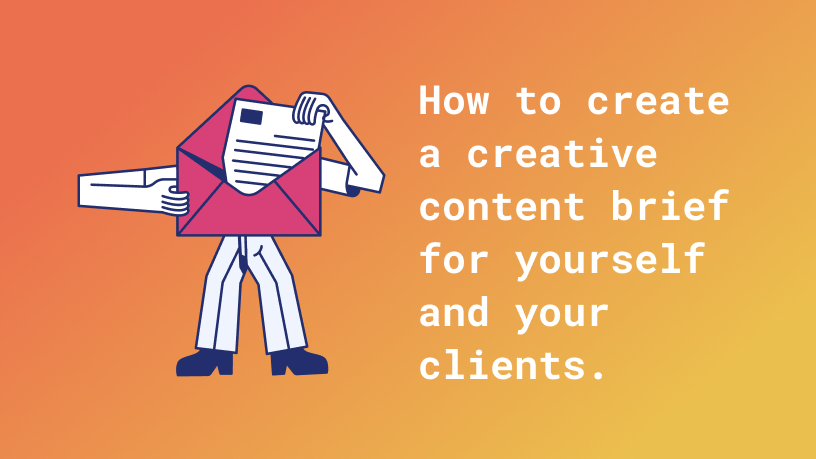Do you want to get into content writing but don’t know how to get started? Are you wondering if it’s not better to throw in the towel and get back to more familiar things? Then this article is for you – and hopefully, it will help you plan, write and publish your first blog post.
In this blog post, I’ll tell you about my writing process, which you’re welcome to copy and adapt to make your own. That way, you don’t have to worry about the how-tos anymore and instead can finally start creating fresh content for your blog!
Step 1) Decide on a topic.
First, you need to know what you want to write about. In the best case, you already have a list of ideas in your Notion, or Google Notes just waiting to be fleshed out.
If you want to come up with a new idea, consider the following:
- What do you typically write about? You probably wouldn’t write about baking recipes on your Node.js blog.
- What would you like to write about? You should only write about things that interest you personally; otherwise, it’s no fun.
- What do your readers want? Consider any questions you’ve received via email or DM, topics you’ve stumbled across on Twitter or Reddit, and so on.
Once you have decided on a topic, you will refine and validate it in the following steps.
Step 2) Define goals and benefits.
While you want to write about something that excites you, you also need to provide value. Therefore, you need to decide what you want to offer your readers with this blog post and keep it in mind during the writing process.
Ask yourself the following questions and write down the answers:
- What are the blog post’s goals?
- What problem are you solving, and how?
- Why are you solving this problem, and what’s the benefit?
- What’s the connection to you and/or your products and services?
- What are the practical steps you want the reader to take away?
Keep your notes in an easily accessible place so you can refer to them during the writing process to ensure your content is in line with what you’ve defined.
Step 3) Think about SEO and create a working title.
If you don’t care about SEO, you can skip this. However, keyword research and finding out user interests help me learn more about my audience and come up with new ideas. So why not give it a try?
I’m not an expert on keyword research, so I recommend reading this blog post on HubSpot to learn the ins and outs of this craft.
I generally look for keywords with neither too high nor too low search volume per month. Keywords with high search volume usually have a lot of competition in the top Google positions. Keywords with high search volume tend to have a lot of competition in the top Google positions. Keywords with low search volume are not relevant to users. However, if you choose a keyword with a lower search volume, you can appear in the top positions faster. I often choose the middle ground – medium search volume and medium competition.
Now it’s time for the title of your blog post.
I always start with a so-called working title, which is not the one I use at the end, but already outlines the content of the blog post. (By the way, in this title, I also integrate my keyword!)
For example, imagine you are writing a blog post about learning JavaScript. Your working title might be “Learning JavaScript without a college education.” This helps you stay on track when writing your article and makes it easier to judge when you’ve missed the mark.
When you finish your article, change the working title to something more interesting, such as “5 Ways to Learn JavaScript Without Going to College.”
Step 4) Create an outline.
It may be tempting to sit down and start writing right NOW. But chances are you’ll end up with a blog post that you yourself won’t understand the next day – let alone your readers.
So let’s first do some research and write an outline for your blog post. This outline – the bones of the blog post – is essential to plan and review your piece’s structure, topics, and length.
This is how I create outlines:
- List the main points. I start by listing the article’s main points and briefly write down what I want to write about each. Later, these points will be turned into a subheading and a section (the content between two subheadings), so I now ensure that each main point focuses on only one topic.
- Sort and cull content. Now I go through all the points and check if I need to delete, merge, rearrange or add any content.
- Let it rest. Now I wait a few hours or come back the next day.
- Final check. After the break, I review each point and the information provided, ensuring that the defined content makes sense and meets my requirements established in Step 2.
Want to learn more about blog post structuring? Then check out my blog post on How to structure your blog posts.
Step 5) Write a draft.
Now comes one of the more exciting parts: writing the blog post! I usually start with the main part right away and expand on the main points of my outline based on the notes I’ve added to each section. This way, I stay on point and don’t let my brain digress into new areas that have little to do with the actual topic.
Tips:
- Always write for your readers.
- Consider whether you need to include an example or link for more information as you write. Add these immediately or make a note for later.
Next comes the conclusion of the blog post. Here, I either briefly summarize the main points, stress a critical point, or add my personal opinion and experience. This is followed by the call to action. What should the reader do next? I usually recommend reading another blog post or subscribing to the newsletter. If you’re writing for a product, you can encourage the reader to sign up for a trial.
Finally, I write the introduction. Yes, I write the part that users read first, last. Why? Because I feel that I can’t give the reader a clear insight into the article until the draft is finished. Maybe I’m just imagining it, but it works better for me that way.
Step 6) Edit edit edit.
For me, editing is the process where everything finally makes sense. I usually write drafts super fast and don’t pay too much attention to grammar, spelling, or whether my ideas are laid out understandably. That’s when editing comes in to save the day.
I connect sentences, delete things, simplify and rearrange them during editing. I also proofread and check my text with translation software if I’m unsure. Finally, I review each passage and see if I can provide more information by adding links or pictures.
It usually takes me twice as long to edit as it does to write a blog post draft. Also, I give myself about a 24-hour break between writing and editing to make sure I come back with fresh eyes.
By the time I’m done editing, I should have a good feel for the quality of my blog post and can already envision it being published as-is.
Step 7) Putting the finishing touches.
After waiting a day or so, I take another look at my blog post and read it carefully again. Then I make any last changes or correct any mistakes I missed.
And that’s basically it!
Final thoughts on how to write your first blog post
This was a pretty rough look at my writing process, but I hope it gave you a good idea of how I do it. Remember, there’s no one way to write a blog post. I think most writers have a similar process, but they all have their own ”peculiarities” built in.
You’ll find lots of content about writing content on my blog, and I’m happy to answer your questions in the comments! Happy writing 🙂
This blog post’s featured image is by Kyle Glenn (Unsplash).





No responses yet